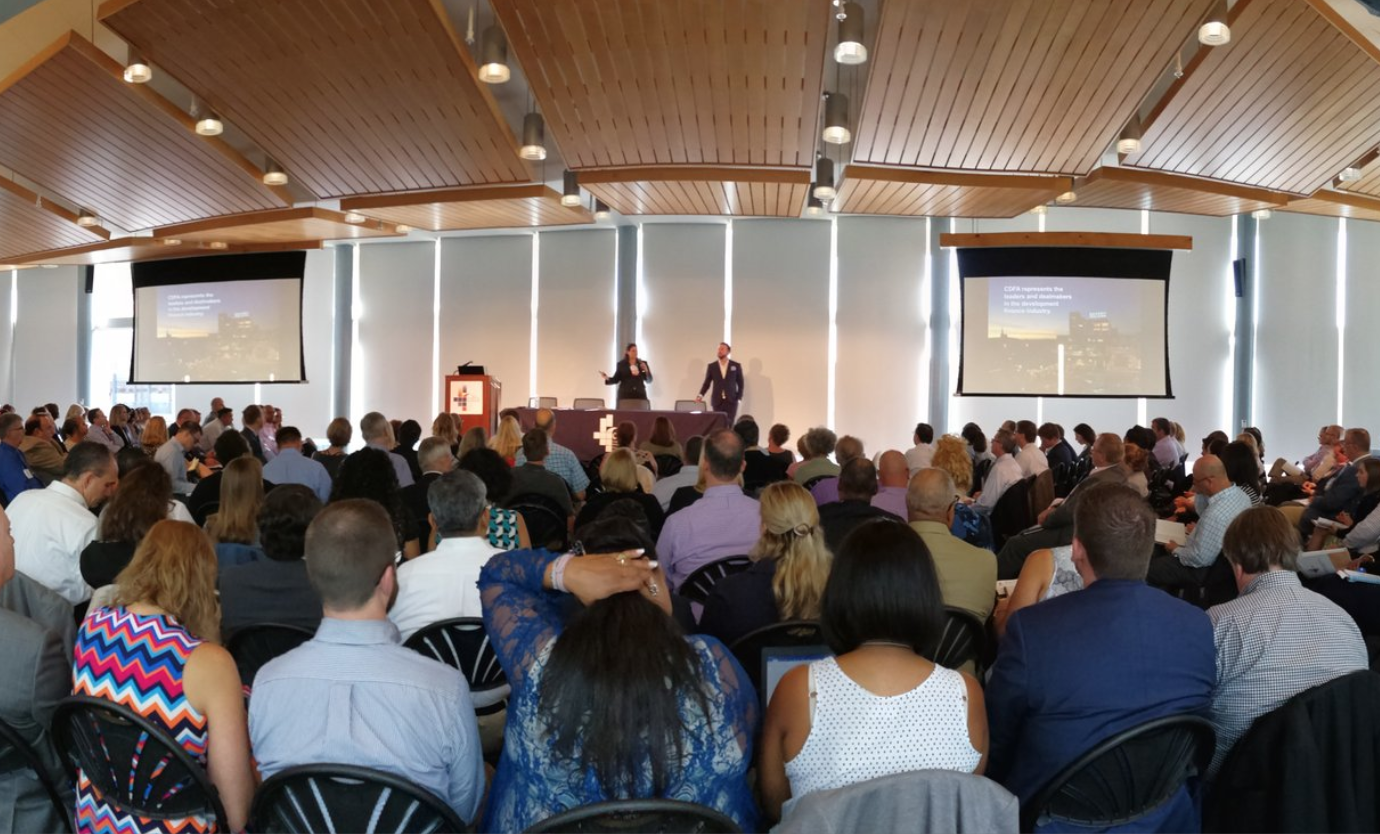Interest in opportunity zones is abundant. Information is not. That’s why more than 200 investors, local leaders and policymakers from more than 40 states turned up at Georgetown last week for an opportunity zone pow-wow hosted by the Beeck Center and the Council of Development Finance Agencies.
On the agenda: Building local opportunity zone strategies, structuring funds for impact, finding investors and investing with equity.
ImpactAlpha invited Rachel Reilly, director of impact investing at Enterprise Community Partners, and Stephen Malta, a community development consultant with the Bay Area Council to report out from the meeting.
A bit of what they heard: Act now. Be transparent. Follow the talent and commit long-term.
Rachel Reilly, director of impact investing at Enterprise Community Partners:
1. The first generation of opportunity funds are coming. Early movers will shape activity to come. Uncertainty reigns as investors and local leaders await implementation clarity from Treasury and IRS. The clarity gap opens a door for first movers to model best practices around state and local leadership, fund structures, investment activity and transparency for others to follow. So it’s time to roll out the investment strategies that drive inclusive economic growth that benefits long-term residents and business owners.
Last week, Enterprise launched first opportunity fund, Emergent Communities Fund, which allows outcomes and impact measurement drive its investment thesis. The state of Colorado is providing funding to communities to organize, build local strategies and prospectuses, and attract investment.
Real estate funds move into opportunity zones, raising concerns about displacement
2. Data will drive outcomes. For community leaders, defining “what success looks like” is a critical first step in creating smart opportunity zone strategies. Community leaders, however, are struggling with the lack of information about where and how opportunity funds are investing. Without basic data on where and how opportunity funds are investing, and their impact, community leaders are concerned about how best to engage with investors to build strategies for long-term, positive social and economic benefits.
Advocates are turning up the heat on Washington. Representatives from the Federal Reserve Bank of New York, U.S. Impact Investing Alliance, and Beeck Center are developing guidance impact measurement, which informed a letter the Alliance sent to Treasury last week calling for the adoption of basic reporting of transaction data. As a start, Enterprise’s Opportunity360 measurement reports can help communities baseline and measure change in opportunity zones over time.
3. Information will unlock implementation. Structuring funds, connecting with investors, and plugging funds into local strategies are giving opportunity zone enthusiasts plenty to think about. But lack of clarity on those issues is stalling opportunity zone activity across the nation and may mean communities miss out on attracting capital to local businesses and projects.
Some guidance should come from Treasury later this month or next. But Treasury Secretary Mnuchin, this summer and then again last week with the US Conference of Mayors, is being vague on what is coming and when. Investors themselves are looking for certainty when evaluating investment options, including long-term local opportunity zone strategies. Fund managers confident in which investments will qualify and how benefits will accrue can more easily align with strategies that drive positive social and economic outcomes.
Real estate funds move into opportunity zones, raising concerns about displacement
Stephen Malta, community development consultant with the Bay Area Council:
4. The scale could be unprecedented. The structure of the opportunity zone program as an IRS tax incentive offers nearly unlimited scalability. In contrast, credit-based programs offer a limited amount of credits from the onset that have to be divvied up and appropriated.
Opportunity funds could attract hundreds of billions, said Maurice Jones of Local Initiatives Support Corporation, or LISC, one the nation’s largest community finance organizations. Jones says opportunity zones could be “the largest federal tax incentive in years.” The Low-Income Housing Tax Credit, the largest such community finance program, by contrast, is about a $10 billion to 12 billion industry and the New Market Tax Credit allocated about $3.5 billion.
5. Money follows talent. So we need to invest in people. Building new businesses will require trained and supported entrepreneurs. Attracting existing ones will require a ready workforce.
“The most important thing we can do is to develop the people and market the people to the investors,” said LISC’s Jones. “Investors invest in talent and that is what we want for communities.” Multi-sector investment is needed to ensure people are prepared to do the work, said Jones. “If we don’t do that piece, it doesn’t matter what the incentives are, the employers will not come.”
Community development lenders attract new investors to low-income neighborhoods
6. Long-term commitments will attract capital. Investments into all 8,700 opportunity zones are tax-advantaged. To set themselves apart, communities may need skin in the game.
In Colorado, the state is helping investors build dealflow by sourcing and showcasing potential investable opportunities on their website, said Jana Persky of the Colorado Office of Economic Development and International Trade. The website also offers an example of how local governments can help opportunity fund managers access investors by promoting upcoming opportunity zone events.
Ohio has introduced legislation that would provide a 10% state tax credit on investments greater than $250,000 in qualified Ohio opportunity funds. States can use additional zone- and credit-based programs to compete. Given the six month requirement to invest funds, development incentives (e.g. density bonuses and streamlining reporting) can help communities attract and absorb capital.
For investors, strong partnerships with community organizations and local leaders will provide confidence that long-term interests are aligned. “What we need for communities are faithful long-term partners,” said Jones. “If all we want is a bunch of transactions, it’s a short-term high and this is not the long game.”











